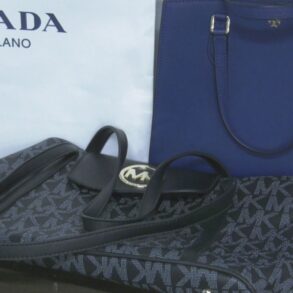
Gucci handbags are sought-after by collectors around the world, and with good reason. Synonymous with exquisite craftsmanship and innovative design, they are the epitome of style and elegance.
Of all Gucci’s handbag designs, three have proven more covetable than the rest, whether made in the mid-20th century or in more recent years: the Bamboo (1947), the Horsebit (1955) and the ‘Jackie’ (1961). They all feature signature brand motifs and typify the house’s technical and creative prowess.
‘These three models represent the storied history of Gucci,’ says Rachel Koffsky, Christie’s International Head of Handbags & Accessories. ‘They’re elegant, functional and effortlessly fashionable, and so have stood the test of time.’
In recent years, the secondary market for designer handbags has expanded into an important luxury sector that draws buyers from all over the world. These three models are among those currently enjoying an uptick in collector interest.
‘Although they were all designed more than half a century ago, they have become Gucci icons,’ Koffsky explains. ‘Today, they are a mainstay of any important Gucci handbag collection.’
Koffsky also notes the environmental benefit of buying vintage bags on the secondary market. ‘It’s one of the most sustainable ways of expanding your collection,’ she says. ‘It’s also a means to acquiring discontinued models or handbags created in limited-edition runs.’
In 2021, when Gucci celebrated its centenary, it opened Vault, an online concept store featuring one-of-a-kind vintage pieces, collaborative collections, and designs from emerging labels. It also offers collector’s items that have been reconditioned and reimagined by Gucci ArtLab artisans, in collaboration with company archivists.
‘Gucci Vault gives vintage pieces a second life,’ says Koffsky, ‘and shows that Gucci’s style can travel through time, taking its place in yesterday’s, today’s and tomorrow’s wardrobes.’
- 1
The Bamboo bag is one of Gucci’s most enduring and popular designs. It first appeared in 1947 — then known by its product number ‘0633’ — and has been reimagined many times since, beoming a must-have fashion accessory in the 1950s and 1960s.
Since then, it has graced red carpets around the world. In February 2022, the bag was reissued in a range of sizes and colours, triggering a resurgence of interest on the secondary market.
Now available via Vault is the one-of-a-kind 1960s Bamboo bag above, which has been reimagined by Gucci artisans in Florence. It features a bamboo handle, a turnlock closure and silk flowers stitched onto the bag’s white leather exterior.
‘I love the contrast between the bag’s structured silhouette and the soft, delicate petals,’ says Koffsky, noting that each flower has been meticulously cut and painted by hand. ‘It’s a wonderful expression of Gucci’s past, present and future ingenuity.’
‘The now iconic burnished bamboo handle was introduced as a result of leather shortages in the post-war period,’ Koffsky explains, adding that the original manufacturing technique is still used by Gucci artisans to this day. ‘The bamboo canes were heated over an open fire and then painstakingly manipulated by hand into a curvilinear handle.’
Symbolic of Guccio Gucci’s ingenuity, the bamboo handle is now one of the house’s signature motifs. It has appeared on medium, small and mini bags crafted in a variety of precious leathers, as well as in a range of Gucci accessories including watches, necklaces, rings and bracelets. In 2020, a trio of gold ‘bamboo’ bangles sold for $10,000, more than double the high estimate.
- 2
By the 1950s, Gucci was experimenting with motifs inspired by the house’s equestrian heritage. Among the most instantly recognisable of these is the horsebit, the double ring and bar design that first appeared on a Gucci loafer in 1953. Since then, the horsebit motif has adorned a wide range of Gucci products, from bags and fine jewellery to lifestyle accessories such as backgammon sets.
First conceived in 1955, the Horsebit bag was an instant hit. ‘These small flap shoulder bags would have been hand-assembled by one craftsman in the Florence workshop,’ explains Koffsky. ‘The work could involve 100 pieces and take an average of 10 hours to complete.’
Crafted from red palmellato calfskin, the Horsebit bag from the Gucci Archive above first appeared in the Gucci quaderno degli artigiani, or artisans’ notebook, dated from 1954 to 1958. ‘It’s a beautiful early example that illustrates the enduring nature of Gucci designs and the brilliance of its artisans,’ says Koffsky.
In the six decades since the Horsebit was first introduced, it has been reissued in a variety of colours, materials and sizes. Tom Ford Horsebit bags from the early 2000s, such as the matte black alligator example below, from the collection of Susan Casden, are now among the most collectable Gucci bags on the secondary market.
‘The Tom Ford Gucci era is a fashion-world favourite,’ notes Koffsky. ‘His golden years are now seeing a resurgence in popularity due to the emergence of Y2K fashion trends on social media.’ Not surprisingly, this means that competition at auction for the finest examples that surface each season has intensified. ‘Acquiring iconic models such as this can represent an excellent investment,’ adds the specialist.
- 3
Gucci’s crescent-shaped bag was first introduced in 1961 and features the brand’s signature cylindrical piston closure in gold or silver metal and an adjustable shoulder strap.
‘It became an icon of the 1960s,’ says Koffsky, ‘and is now one of the most coveted models on the secondary market.’
Iterations of the ‘Jackie’ have been reissued in a wide range of materials, from calfskin and suede to exotic leathers such as ostrich and crocodile. The early 1970s example above is crafted from the original GG monogram canvas, a trellis design punctuated with reversed double GGs woven into a sandy taupe jacquard fabric.
‘Gucci filed for the patent for this signature motif in 1969,’ says Koffsky, explaining that the design is an update of Gucci’s original 1930s Diamante design, a repeated geometric diamond pattern in dark brown on tan canvas. ‘In the 50 years since its introduction, the GG monogram has appeared on clothes and accessories including belts, hats, handles and bags.’
The GG monogram canvas, as seen on the ‘Jackie’ from the Gucci Archive, is frequently paired with Gucci’s green-red-green Web stripe detail. The now famous motif, first seen in the early 1950s, nods to the equestrian heritage of the brand, and is a reinterpretation of the girth strap — the band that holds a horse’s saddle in place.
Sign up today
Christie’s Online Magazine delivers our best features, videos, and auction news to your inbox every week
Subscribe
In 2023, Christie’s offered an oversized ‘Jackie’ bag in GG canvas fabric with silver hardware (circa 2000) from the collection of Vogue editor André Leon Talley.
‘Celebrity provenance adds an extra layer of glamour and so tends to significantly increase the desirability and collectability of the individual model,’ says Koffsky. The bag in question is a case in point. After a spirited bidding battle, it sold for more than triple the low estimate at $2,142.
This post was originally published on this site be sure to check out more of their content.







